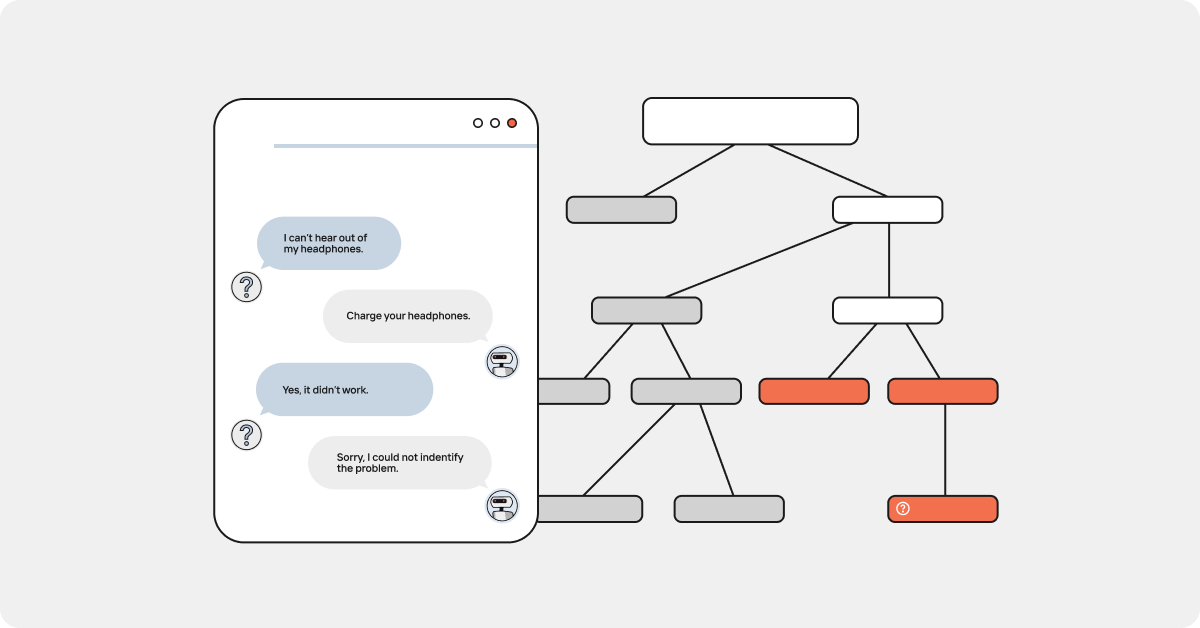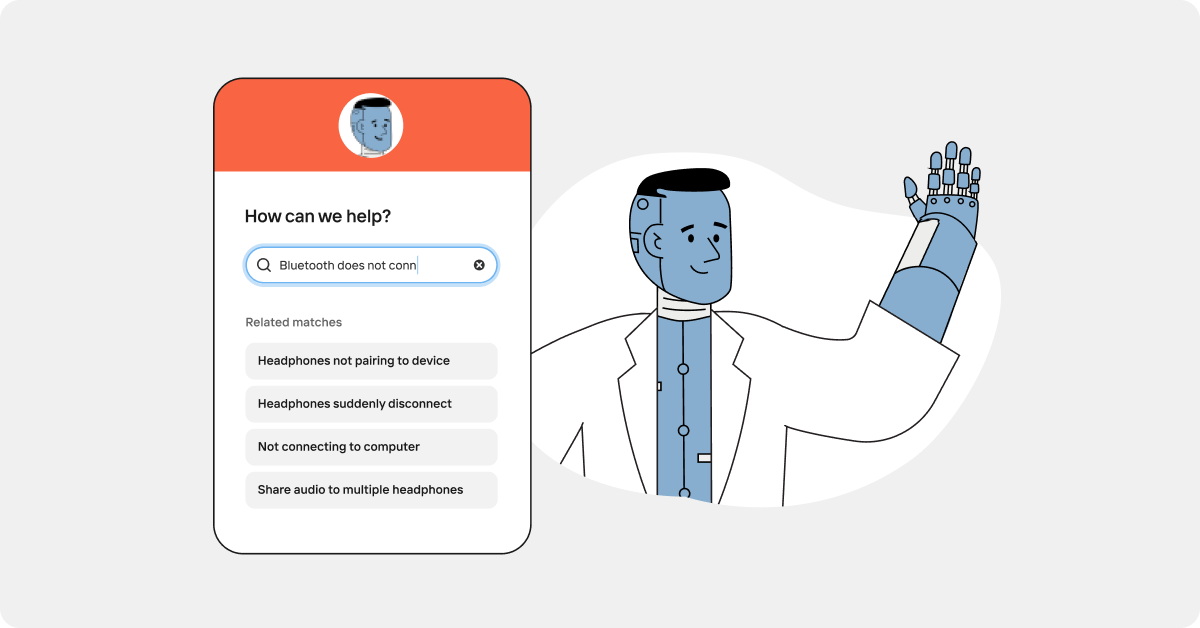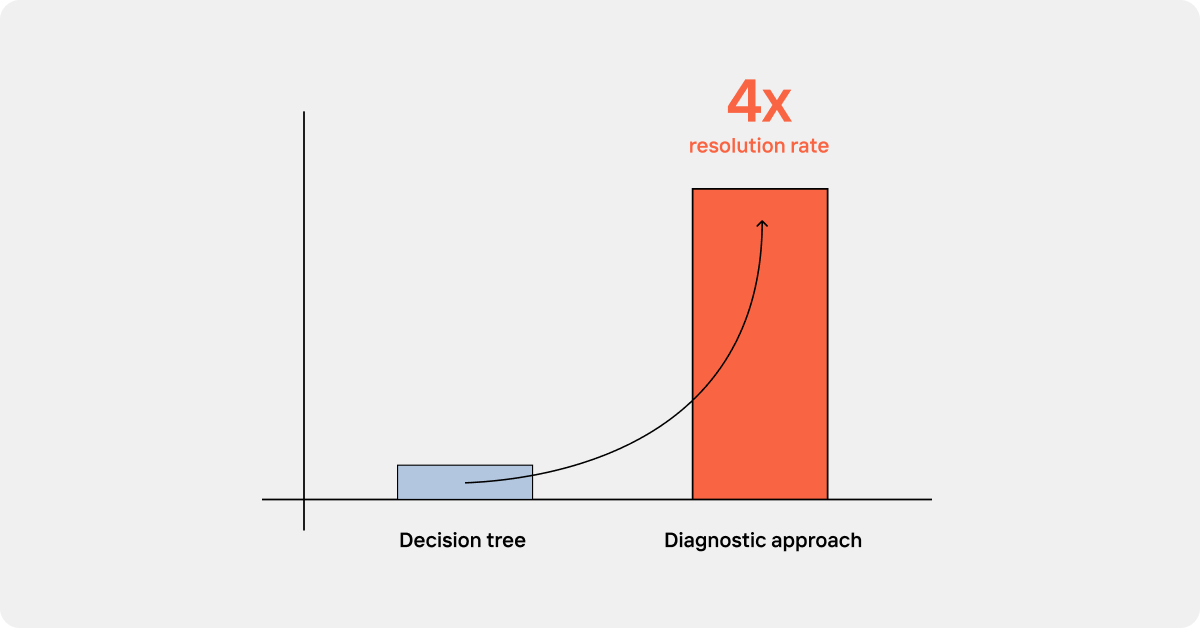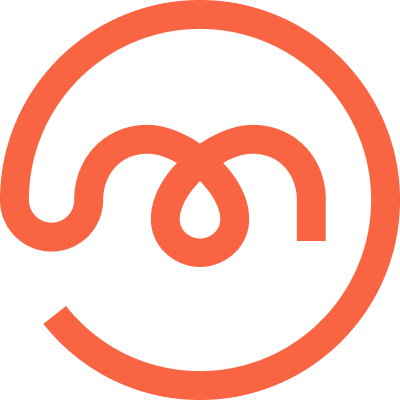Hardware products require different support than software services. Why? Because fixing a broken physical product in the real world is extremely different than resolving a software update. Hardware companies not only have to support tedious FAQs, but they also have to troubleshoot complicated and challenging questions to help diagnose and repair their customers' issues.
When considering support solutions, these hardware companies often neglect the technical approach these solutions utilize. However, understanding how these solutions are built is essential for understanding what tool is best suited for a company.
Most support solutions offered today are composed of two types of approaches — decision tree and diagnostic. You might have heard of these technical terms before — but what do they really mean?
This blog post will break down both what the decision tree and diagnostic approach are and will explain why diagnosing the root cause of a problem is so important in helping truly resolve customers issues, especially for complex hardware troubleshooting.
Overview
Before we get into the details, here’s a video that gives a quick overview of the reasons why the diagnostic approach is better for troubleshooting.
What is the decision tree approach?
The majority of chatbots are built with the decision tree approach. This is good for general inquiries and FAQS, but for more complex troubleshooting— particularly with physical hardware products— this method falls short.
The decision tree approach is rooted in very simple technology: using a tree-like model to predict the correct steps based on conditional logic. It’s a logic-based way to use simple questions (think yes/no and true/false) to make decisions on what to do. Decision trees got popular because they are both easy for humans to set up and easy for tech (ie. chatbots) to follow.
Decision trees are a convenient framework for chatbots to help them deflect a high volume of very simple requests across various industries. But when chatbots use decision trees, they aren’t making calculated decisions — they only follow the predetermined paths already laid out in front of them. In order for a chat to be effective with the decision-tree approach, there needs to be a clear answer and the customer must type in a relevant term.

This method works well for general FAQs or simple yes or no questions but falls short for more complex problems that need multiple steps (which are common among hardware companies). The more specific an inquiry, the more branches required to solve it — and the more branches created, the more likely a customer is to choose the wrong "path," leading to the incorrect answer.
As issues become more complicated, chatbots built on decision tree logic will eventually break down, as the predetermined tree runs out of solutions. Complex problem solving becomes difficult as multi-layered troubleshooting requires trial and error to diagnose the root cause, which decision-tree logic is simply not equipped to handle.
What does this look like in practice? Customers have to repeat themselves across multiple sessions with the chatbot to diagnose the issue themselves, getting more frustrated every time.
What is the diagnostic approach?
Unlike decision trees, which have a predetermined path, the diagnostic approach is dynamic and allows customers to get to the root cause of the problem by leveraging machine learning to create a looped troubleshooting experience.

To simplify, you can think of the diagnostic approach as similar to a doctor. For example, when using the diagnostic approach a product assistant will ask questions to the customer to understand the issue symptoms based on observations. Once the product assistant has enough information, it will suggest the most appropriate solution. Additionally, it can provide multiple solutions until the right one is found. The result? More resolutions. So much so, that the diagnostic approach yields resolution rates over four times that of the decision tree approach.

Additionally, through machine learning, the diagnostic approach can also lead to self-improvement, as it learns from past customer questions and issues. The diagnostic approach also gets smarter every time a customer asks a question. Rather than branches of a tree, diagnostic solutions use logic that is looped, so customers can build upon the information they've already provided and continue to work towards the right solution. In the headphone example, if a customer is trying to pair with an iOS device, which diagnostic approach automation would then be able to incorporate by showing iOS-specific troubleshooting info.
Decision trees fall short for complex troubleshooting
Decision trees work well for simple questions with straightforward responses, but they lack the knowledge needed to resolve tough repairs and inquiries. Especially for hardware products, decision trees decrease the chance of resolving complex questions and increase the likelihood of customer dissatisfaction. If you need to provide troubleshooting for multi-step solutions, you should implement a support solution that uses the diagnostic approach to resolve customers' complex problems.
Mavenoid runs on the diagnostic approach
Mavenoid was made for hardware brands. We leverage the diagnostic approach with our pre-trained AI that recognizes and diagnoses specific issues with accuracy and efficiency, so customers receive excellent support service. At the same time, we use our unique machine learning to flow end-user data, helping our customers optimize for more self-service resolutions down the line so your live agents can deal with fewer and fewer repetitive, time-consuming tasks.
